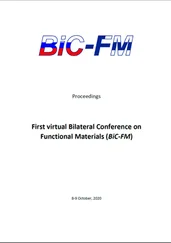1 ...7 8 9 11 12 13 ...23 10 10 Zollinger, A., Mohn, D., Zeltner, M., and Zehnder, M. (2018). Short‐term storage stability of NaOCl solutions when combined with dual rinse HEDP. Int. Endod. J. 51 (6): 691–696.
11 11 Welsh, A.H., Townsend Peterson, A., and Altman, S.A. (1988). The fallacy of averages. Am. Nat. 132 (2): 277–288.
12 12 Musanje, L. and Darvell, B.W. (2003). Aspects of water sorption from the air, water and artificial saliva in resin composite restorative materials. Dent. Mater. 19 (5): 414–422.
13 13 Musanje, L., Shu, M., and Darvell, B.W. (2001). Water sorption and mechanical behaviour of cosmetic direct restorative materials in artificial salvia. Dent. Mater. 17: 394–401.
14 14 Şanlı, S., Dündar Çömlekoğlu, M., Çömlekoğlu, E. et al. (2015). Influence of surface treatment on the resin‐bonding of zirconia. Dent. Mater. 31: 657–668.
15 15 Darvell, B.W. (2020) Misuse of ISO standards in dental materials research. Dent. Mater. 36 (12): 1493–1494.
16 16 http://www.chemspider.com/Chemical‐Structure.5826.html?rid=4a01b359‐c38c‐4e4a‐9bce‐487b6c2b5176
17 17 Yelamanchili, A. and Darvell, B.W. (2008). Network competition in a resin‐modified glass‐ionomer cement. Dent. Mater. 24: 1065–1069.
18 18 Ruse, N.D. (1999). What is a ‘compomer’? J. Can. Dent. Assoc. 65: 500–504.
19 19 Camilleri, J. (2020). Hydraulic calcium silicate‐based endodontic cements. In: Endodontic Advances and Evidence‐Based Clinical Guidelines; Section 2: Advances in Materials and Technology (eds. H.M.A. Ahmed and P.M.H. Dummer). London: Wiley.
20 20 Camilleri, J. (2007). Hydration mechanisms of mineral trioxide aggregate. Int. Endod. J. 40: 462–470.
1 1The irony of having to refer to the ‘mineral' of tooth tissue is not lost on me.
2 Pulp Capping Materials for the Maintenance of Pulp Vitality
Phillip L. Tomson1 and Henry F. Duncan2
1School of Dentistry, Institute of Clinical Sciences, University of Birmingham, Birmingham, UK
2Division of Restorative Dentistry and Periodontology, Dublin Dental University Hospital, Trinity College Dublin, Dublin, Ireland
TABLE OF CONTENTS
2.1 Introduction
2.2 Maintaining Pulp Vitality2.2.1 Why Maintain the Pulp? 2.2.2 Pulpal Irritants 2.2.3 Pulpal Healing After Exposure 2.2.4 Classifications of Pulpitis and Assessing the Inflammatory State of the Pulp 2.2.5 Is Pulpal Exposure a Negative Prognostic Factor? 2.2.6 Soft Tissue Factors Unique to the Tooth
2.3 Clinical Procedures for Maintaining Pulp Vitality2.3.1 Managing the Unexposed Pulp 2.3.2 Tooth Preparation to Avoid Exposure 2.3.3 Managing the Exposed Pulp 2.3.3.1 Direct Pulp Capping 2.3.3.2 Partial Pulpotomy 2.3.3.3 Full Pulpotomy 2.3.3.4 Pulpectomy 2.3.4 Immature Roots
2.4 Materials Used in Vital Pulp Treatment2.4.1 The Role of the Material 2.4.2 Calcium Hydroxide 2.4.3 Resin‐Based Adhesives 2.4.4 Hydraulic Calcium Silicate Cements 2.4.5 Resin‐Based Hydraulic Calcium Silicate Cements 2.4.6 Glass Ionomer Cements 2.4.7 Experimental Agents Used in Vital Pulp Treatment 2.4.8 Tooth Restoration After VPT
2.5 Clinical Outcome and Practicalities2.5.1 Vital Pulp Treatment Outcome 2.5.2 Discolouration 2.5.3 Setting Time and Handling
2.6 Conclusion
References
Preserving the health of the dental pulp, or at least part of it, is important when treating a vital tooth with a deep unexposed cavity or exposed pulp, particularly if the root formation is incomplete. There is a long tradition of treating deep cavities and exposed dental pulp by performing procedures such as pulp capping and partial and complete pulpotomy. An improved understanding of the regenerative capacity of the dentine–pulp complex and the introduction of new hydraulic calcium silicate cements (HCSCs) has stimulated a new wave of research and treatment strategies in this area. The aim of this chapter is to evaluate the pulpal healing response, the range of vital pulp treatment (VPT) procedures, and the nature of the materials employed in the management of deep caries and exposed pulp.
2.2 Maintaining Pulp Vitality
2.2.1 Why Maintain the Pulp?
Maintaining healthy pulp tissue is preferable to root canal treatment (RCT), which can be complex, destructive, time‐consuming, and expensive for both patients and clinicians. Preserving all or at least part of the dental pulp is important after pulp exposure, especially when the tooth is immature and root formation is not yet complete [1]. The need for a more conservative approach to management of the inflamed pulp is a more biologically based and minimally invasive treatment strategy compared with pulpectomy and has recently been encouraged in editorials and position statements [1, 2]. Besides reducing intervention, this biological concept also maintains pulp developmental, defensive, and proprioceptive functions [3, 4]; VPT is generally considered technically easier to execute than RCT [5]. From a longitudinal perspective, advocating less aggressive dentistry reduces overtreatment and limits the ‘restorative cycle’ concept [6], whilst also improving the cost‐effectiveness of treatment [7]. Finally, with the surge in research and interest in regenerative endodontics [8], biomaterial developments [9], and the need to therapeutically utilize dental pulp stem cell (DPSC) populations [10], VPT has reemerged as an area of significant interest to both patients and dentists [11].
Although the pulp can be challenged by microbial, mechanical, and chemical stimuli, necrosis will not result without the presence of microorganisms [12]. Caries has traditionally been considered the principal cause of pulpal damage, and although falling in prevalence, it is now manifesting more commonly in disadvantaged and elderly populations [13–15]. Whilst inflammation of the pulp is evident even in shallow carious lesions [16, 17], it is not until the carious process is deep and comes within 0.5 mm of the pulp that the pulpitic response significantly intensifies [18]. As a result, before it reaches this stage, the damage is likely to be reversible. This forms the basis of predictable operative dentistry, in that the pulp should recover after removal of carious dentine and insertion of a suitable dental restorative material [19]. Microbial challenge, however, is not limited to caries, as bacterial microleakage is also a common cause of pulpitis and subsequent necrosis due to oral microorganisms colonizing the ‘gap’ between the restoration and the tooth [20]. Prevention of microleakage using lining material is no longer considered good practice [21], but dentine bonding agents and incremental placement of resin‐based composites will reduce the risk of bacterial colonization [22], particularly if there is sufficient residual dentine thickness (RDT).
Views on the irritant effect of dental materials on the pulp have changed over the last 50 years. The idea that their toxicity to pulp tissue leads to pulpal necrosis has been questioned by several operators [20, 23, 24], who point to microbial contamination and leakage as the decisive factor in sustained pulpal inflammation. That said, there is also good evidence to suggest that some materials are more biocompatible and ‘pulp‐friendly’ than others, with the adverse toxic effects of dental resins on pulp cells being repeatedly highlighted [25, 26]. Alternatively, the positive biological responses of HCSC [9] have led to recent suggestions that deep carious lesions should be lined with HCSC after deep caries removal [27]. Other nonmicrobial irritants such as bleaching procedures, particularly chairside ‘power’ techniques, can lead to rises in pulpal temperature and pulpitis [28]; however, whilst these are increasingly common as treatment strategies, the pulpal changes seen are generally reversible and are not catastrophic in nature [29, 30].
Читать дальше












